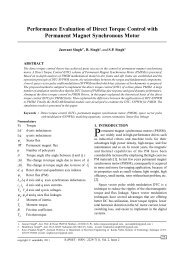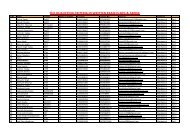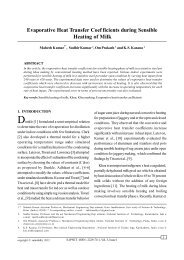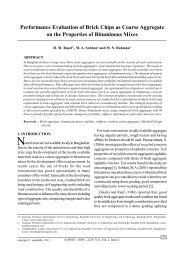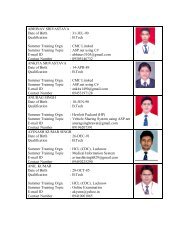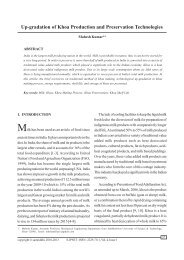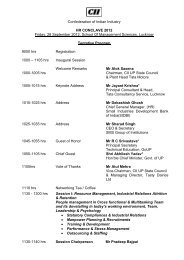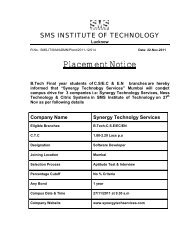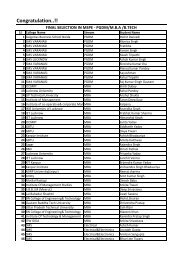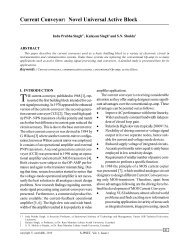Electronics Spectra - SMS Lucknow
Electronics Spectra - SMS Lucknow
Electronics Spectra - SMS Lucknow
You also want an ePaper? Increase the reach of your titles
YUMPU automatically turns print PDFs into web optimized ePapers that Google loves.
<strong>SMS</strong> Institute of Technology, L ucknow<br />
MEMS<br />
INTRODUCTION<br />
A<br />
Micro-Electro-Mechanical System<br />
(MEMS) that contains both electrical<br />
and mechanical componen ts<br />
with its ranging size from nanometers<br />
to millimeters. MEMS is a device which<br />
is able to replace bulky networks, sensors,<br />
actuators on a common silicon<br />
substrate. These all are fabri cated<br />
using IC process sequences (e. g.<br />
CMOS, BICMOS process). This re -<br />
duces bulk, cost, weight and p ower<br />
consumption with increase in its performance,<br />
production volume.<br />
Furthermore, there are many applications<br />
to come including g enetic<br />
and disease testing, power dev ices,<br />
RF devices, weapon system and data<br />
storage. Micromirror- based switches<br />
have already proven their importance.<br />
MEMS promises to revolutionize almost<br />
all product category by fabricating together<br />
silicon-based microelectronics<br />
with micromachining technology, making<br />
possible the realization of complete<br />
system-on-chip.<br />
FABRICATION<br />
The fabrication technique used in<br />
MEMS consists of the conventio nal<br />
techniques developed for integrated<br />
circuit processing. The essential elements<br />
in conventional silicon processing<br />
are deposition, lithograph y, and<br />
etching.<br />
DEPOSITION<br />
The essential element in MEMS<br />
processing is the ability to deposit thin<br />
films of material. In this process, we<br />
assume that a thin layer to ha ve a<br />
thickness anywhere between a f ew<br />
nanometers to 100 micrometer. The<br />
thin film then can be etched with the<br />
help of developer. There may be various<br />
types of deposition used for this<br />
process which are as under:<br />
‣ Chemical vapour deposition<br />
‣ Epitaxy<br />
‣ Oxidation<br />
‣ Physical deposition:<br />
Sputtering<br />
Evaporation<br />
Spin-on method<br />
LITHOGRAPHY<br />
Lithography includes three<br />
sequential steps:<br />
‣ Application of photoresist, which<br />
is a photosensitive emulsion layer;<br />
‣ Optical exposure to print an i m-<br />
age of the mask onto the resist;<br />
‣ Immersion in an aqueous developer<br />
solution to dissolve the exposed<br />
resist and render visible the<br />
latent image.<br />
The pattern layout is generate d<br />
using a computer aided design and<br />
transferred into a layer a specialized<br />
mask-making facility, often by electron<br />
beam or laser beam. A complete<br />
microfabrication involves several lithographic<br />
operations with differ ent<br />
masks.<br />
ETCHING<br />
‣ Etch rate- The speed of the etching<br />
should be fast enough to be<br />
good for production but is als o<br />
controllable.<br />
‣ Uniformity- The etching is not location<br />
dependent.<br />
‣ Selectivity- Selection of developer<br />
through which etching is done is<br />
important.<br />
‣ Directionality- They can be isotropic<br />
, or anisotropic.<br />
Isotropic etchants etch unifor mly<br />
in all direction, resulting in rounded<br />
cross sectional.<br />
CATEGORIES OF MEMS<br />
There are several different c ategories<br />
of MEMS which are as under:<br />
Department of <strong>Electronics</strong> & Co mmunication<br />
Bulk micromachining<br />
Tejashwani Dubey<br />
EC - II year<br />
Bulk micromachining is a technique<br />
which builds mechanical elements by<br />
starting with a silicon wafer, and then<br />
etching away the unwanted parts and<br />
left with useful mechanical devices.<br />
Today almost all pressure sensors<br />
are built with bulk micromachining. Bulk<br />
micromachined pressure sensors offer<br />
several advantages over tradit ional<br />
pressure sensors. They cost less, are<br />
highly reliable, manufacturable, and<br />
there is very good repeatabili ty between<br />
devices. The small size and high<br />
reliability of micromachined pressure<br />
sensors make them ideal for a various<br />
of medical fields.<br />
Surface Micromachining<br />
In bulk micromachining, the de -<br />
vices are build by etching into a warfer,<br />
Surface micromachining builds devices<br />
from the wafer layer by layer. A Surface<br />
Micromachining is a repet itive<br />
33 <strong>Electronics</strong> <strong>Spectra</strong>, 2010



